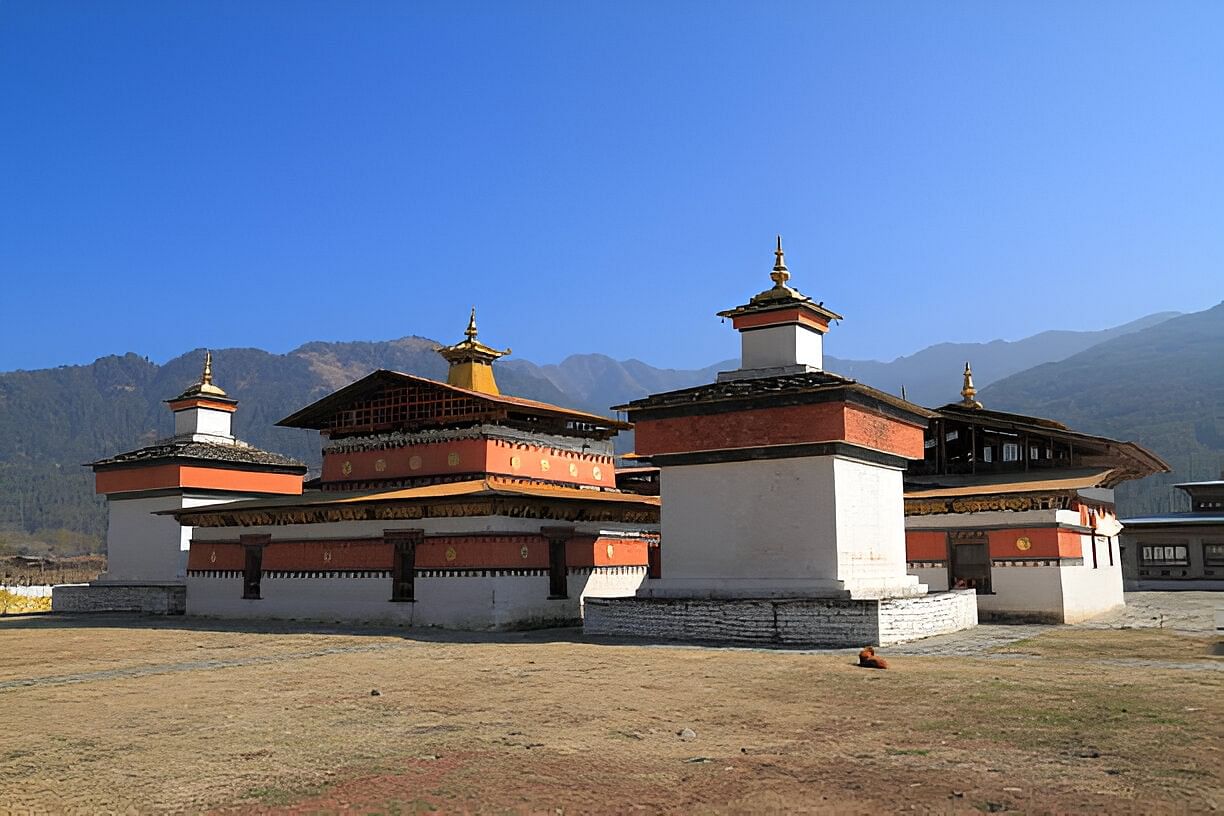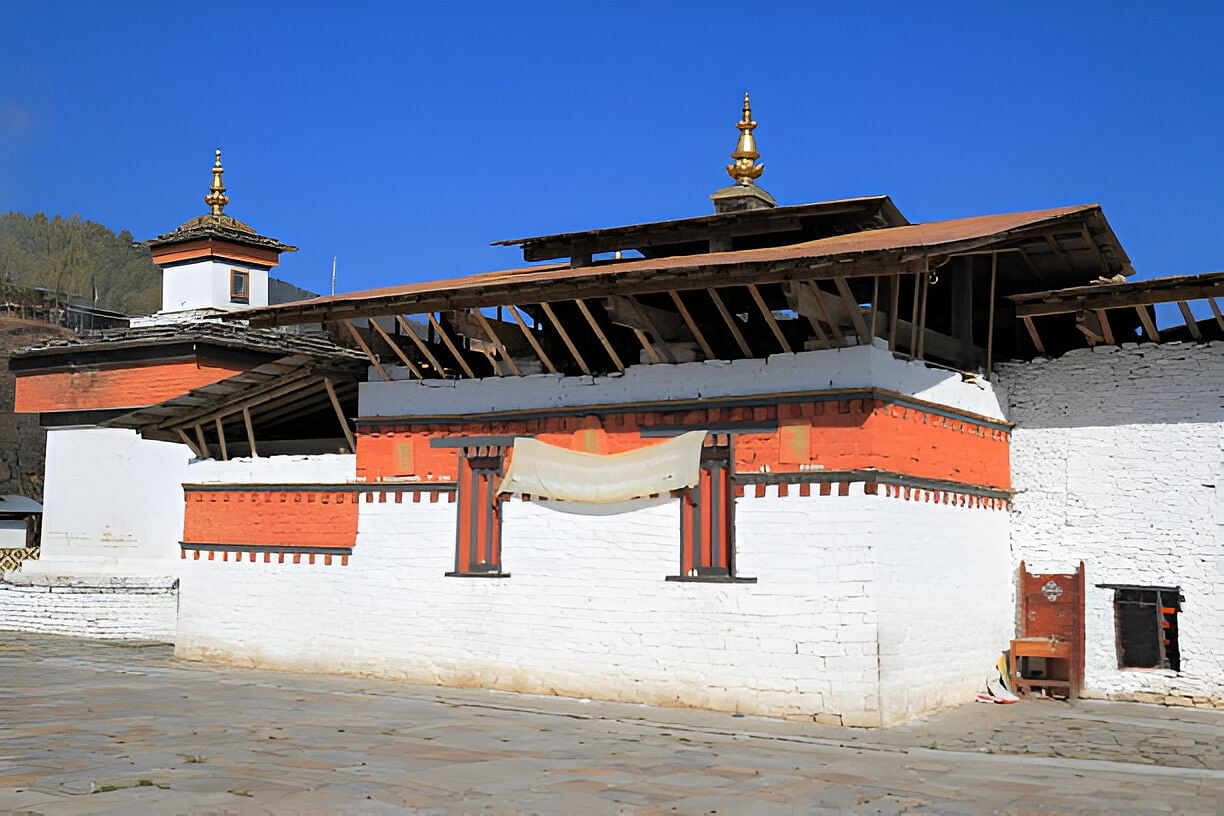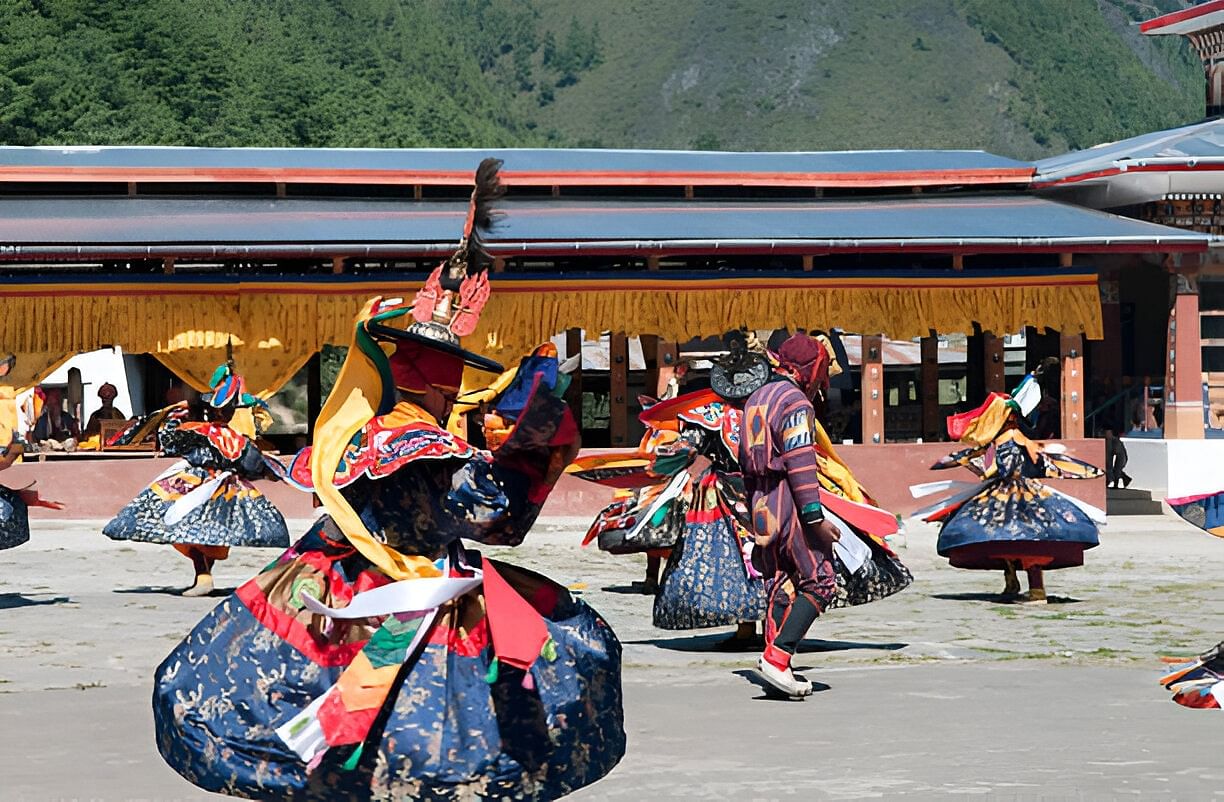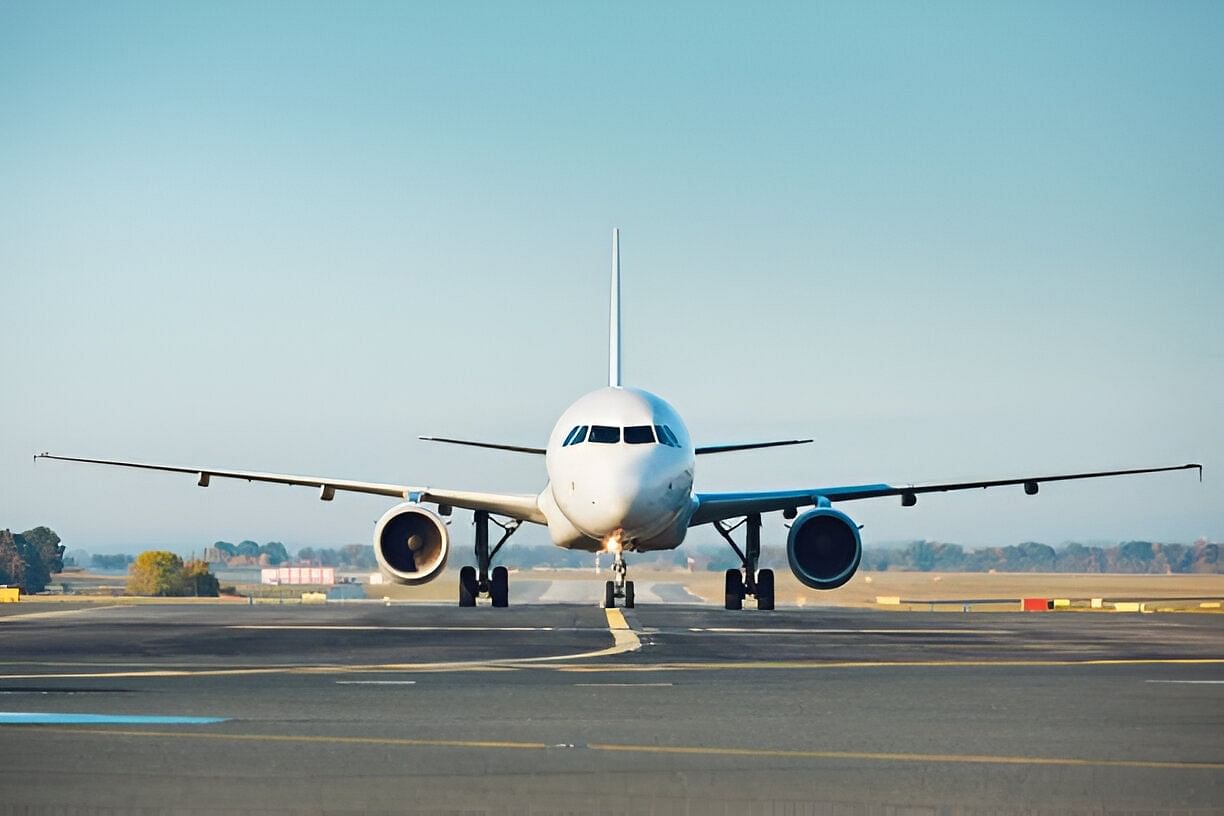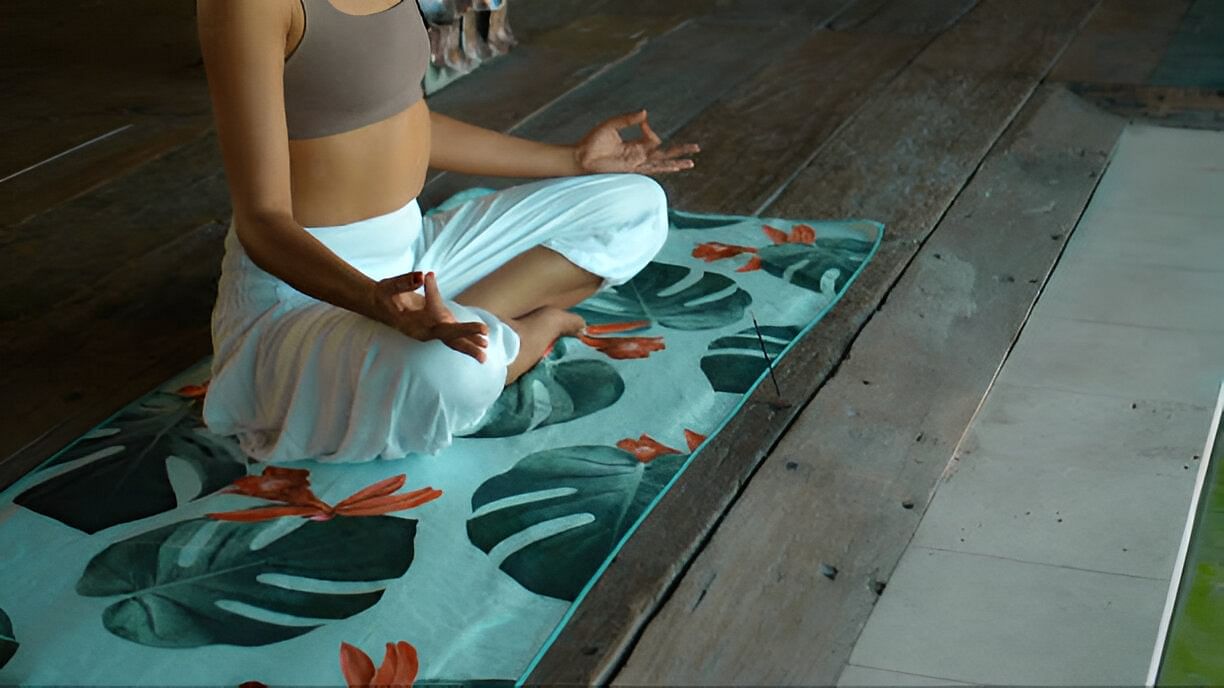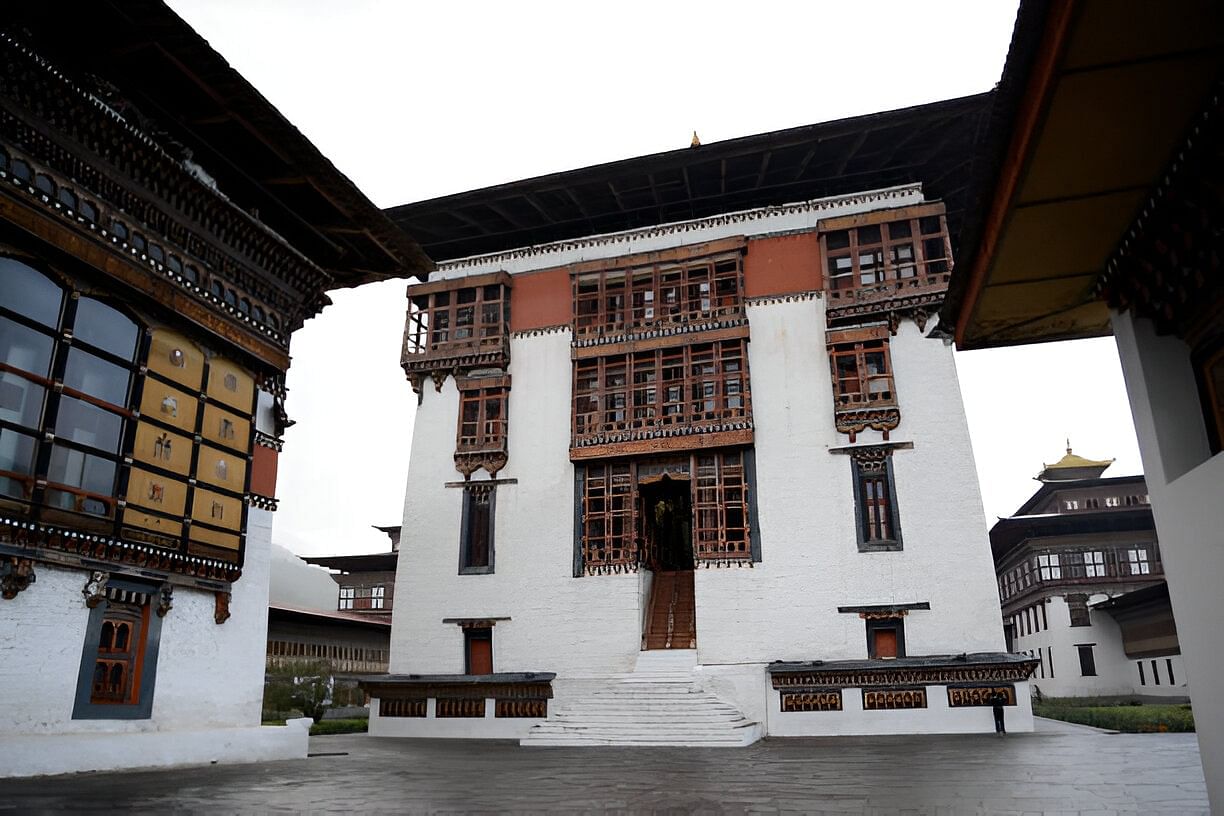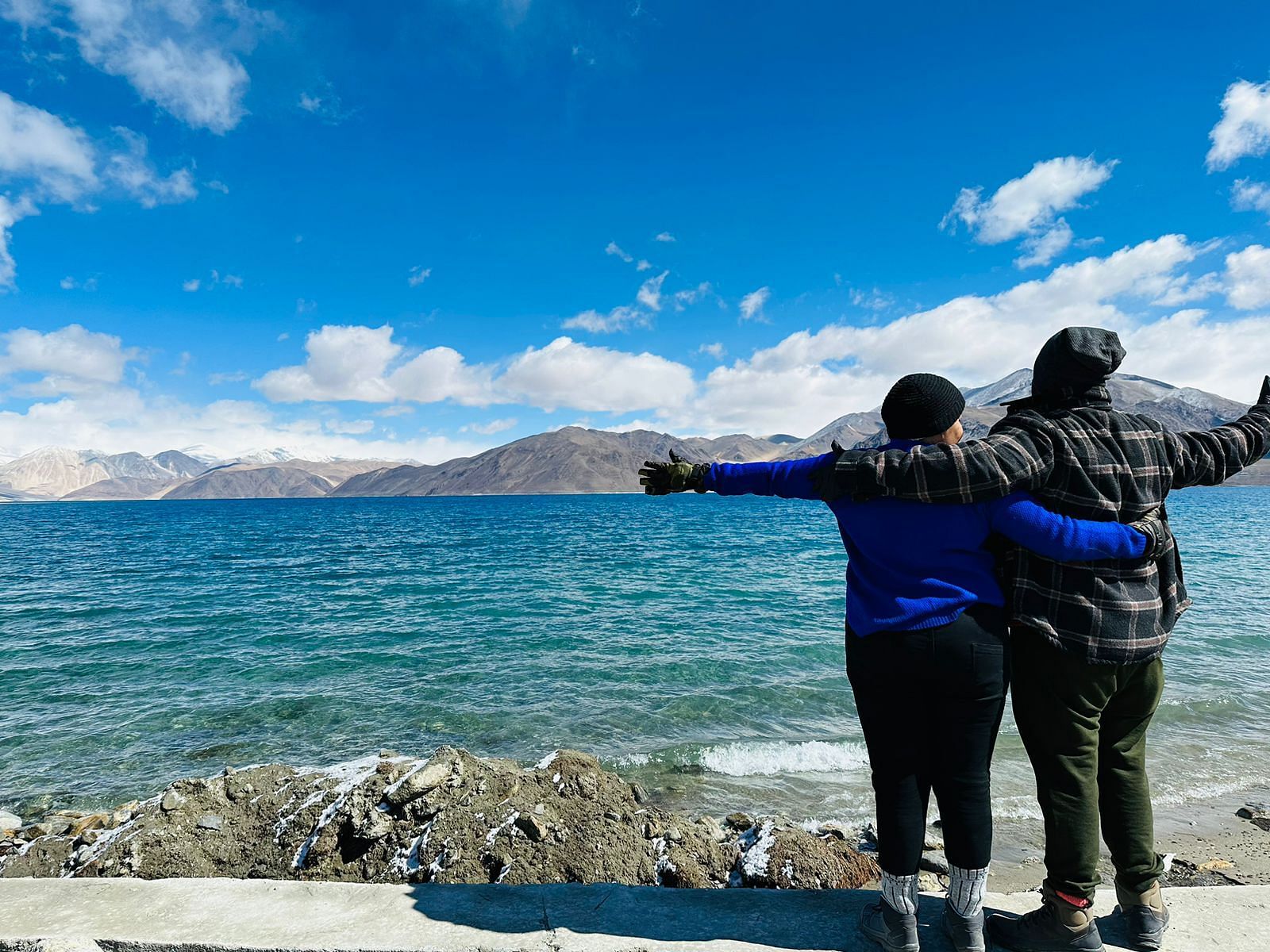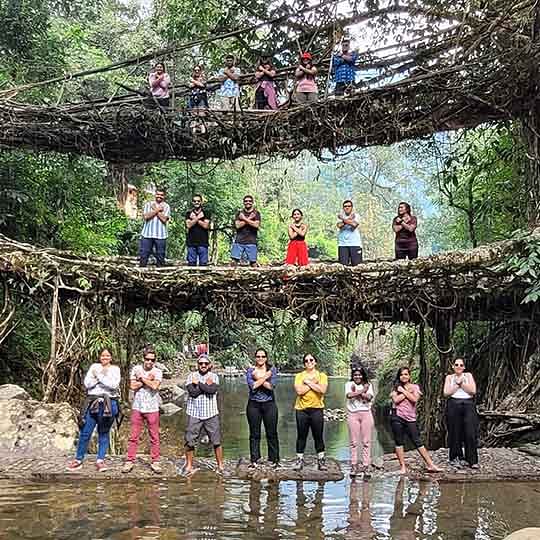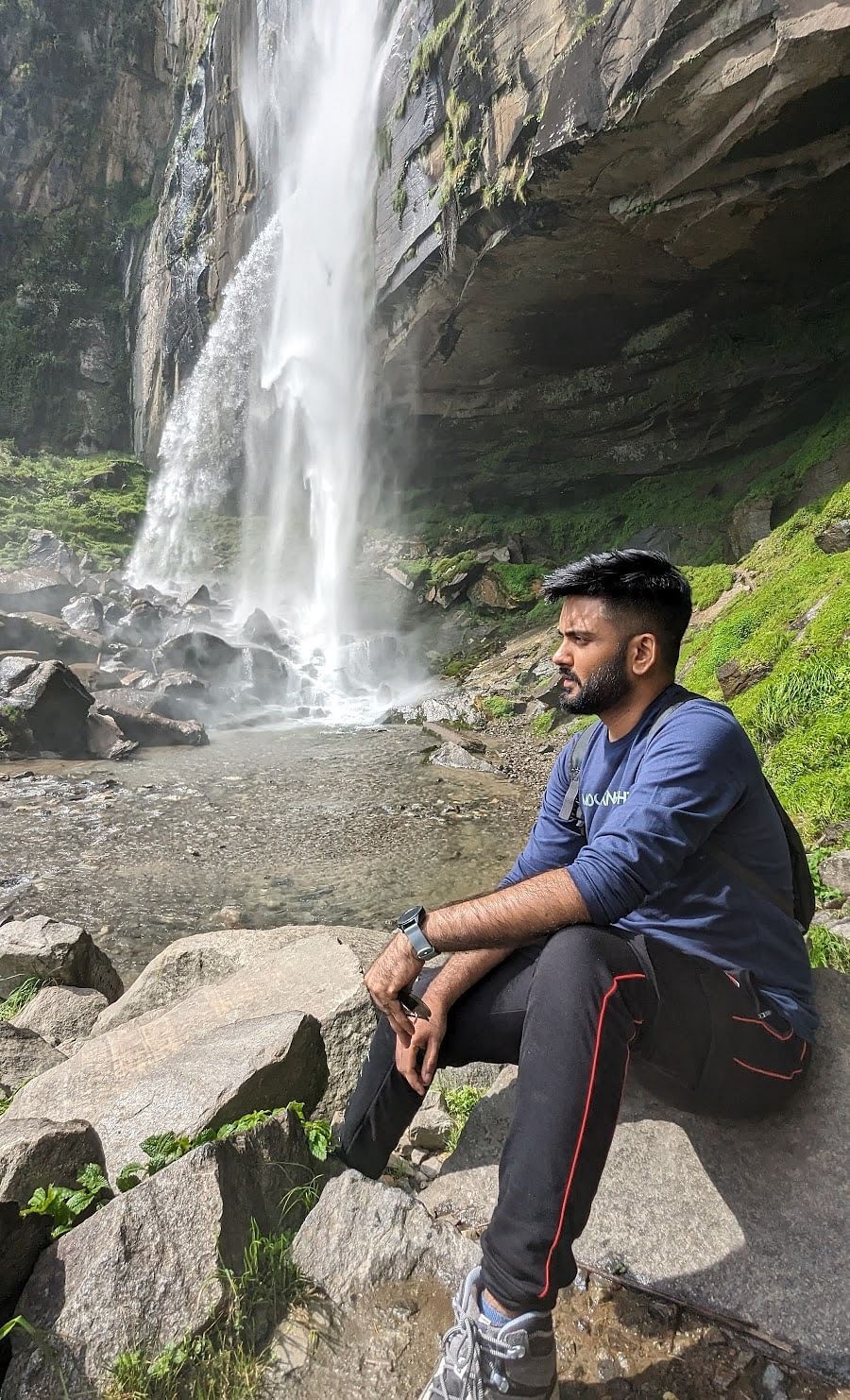Nestled in Bhutan’s enchanting Bumthang Valley, Jambay Lhakhang is one of the country’s oldest and most sacred temples. Built-in the 7th century, it’s a must-see for anyone exploring Bhutan’s rich spiritual heritage. Known for its annual festival, this ancient site is a hidden gem for travelers seeking unique Bhutan Trip Packages. Whether you’re drawn by history, culture, or adventure, Jambay Lhakhang promises an unforgettable experience amidst Bhutan’s scenic landscapes.
The Legend of the Evil Demoness of Jambay Lhakhang
Long ago, before Buddhism could spread throughout the Himalayas, an evil demoness lay across the land, preventing its teachings from taking root. According to local legend, this powerful demoness stretched her enormous body over the region, with each part of her threatening the spread of Buddhism.
To subdue her, the Tibetan King Songtsen Gampo devised a plan to pin her down by building 108 temples across Tibet and Bhutan. Each temple was strategically placed on key points of her body to hold her in place.
Jambay Lhakhang, one of the first and most significant of these temples, was built over her left knee. It played a crucial role in suppressing the demoness’s powers, allowing Buddhism to flourish in the region. Thus, Bumthang is one of the popular places to visit in Bhutan.
History of Jambay Lhakhang
Jambay Lhakhang became a symbol of victory over evil forces and a key site for spreading Buddhist teachings. This temple in Bhutan holds great significance in Bhutanese culture, as it has been a center of religious activities for centuries. It is said that Guru Rinpoche, a revered Buddhist master, visited the temple in the 8th century, further blessing the site.One of the most famous events at Jambay Lhakhang is the annual Jambay Lhakhang Drup festival. This festival celebrates the birth of Guru Rinpoche and showcases traditional Bhutanese dance, including the famous fire dance, which is believed to purify sins and bring blessings to the participants.
Today, Jambay Lhakhang remains a vital spiritual landmark in Bhutan, drawing pilgrims and tourists alike. Its ancient architecture and sacred history make it an important stop for anyone visiting Bhutan to explore its deep-rooted Buddhist heritage.
Jambay Lhakhang Architecture and Interiors
Jambay Lhakhang is an impressive example of Bhutanese architecture, made of stone and wood, and built in the 7th century. Over the years, different Bhutanese kings contributed to its construction. In the 15th century, King Ngagi Wangchuk expanded the temple, adding statues of Buddha and other sacred elements. In the 19th century, King Jigme Namgyal further restored and extended parts of the temple, preserving its spiritual and historical importance.Inside, the main prayer hall is beautifully decorated with colorful murals that tell stories from Buddhist teachings. Statues of Buddha, Guru Rinpoche, and other important deities are placed throughout the temple, offering a place for prayer and reflection. The walls and ceilings are adorned with detailed carvings and paintings of religious symbols.
Smaller rooms and shrines surround the main hall, each dedicated to different deities or spiritual masters. Over the centuries, the temple has undergone several restorations, carefully preserving its original charm while adapting to Bhutan’s evolving religious practices. Jambay Lhakhang remains a cherished spiritual and architectural gem in Bhutan.
Jambay Lhakhang Drup Festival
The Jambay Lhakhang Drup is one of Bhutan’s most famous festivals, held every year at Jambay Lhakhang temple in Bumthang. This lively festival usually takes place in October or November and lasts for several days. The festival celebrates Guru Rinpoche, a key figure in spreading Buddhism in Bhutan, and is filled with colorful religious dances and rituals.One of the most exciting events is the “Mewang” or fire dance, where performers dance around a large fire to purify sins and bring blessings. There’s also the “Tercham” or naked dance, which is meant to honor ancient traditions and ensure good harvests for the coming year.
The naked dance, introduced by Tertoen Dorji Lingpa in the 8th century, was performed to distract evil spirits that were preventing the construction of a temple. Locals, hand-picked by the Lama and village elders, performed the dance, and according to legend, the tactic worked, allowing the temple to be successfully completed.
During the festival, both locals and visitors gather to watch these unique performances, pray, and celebrate together. The Jambay Lhakhang Drup is a special time to connect with Bhutan’s rich cultural and spiritual heritage.
How to reach Jambay Lhakhang
To reach Jambay Lhakhang, first fly to Paro International Airport, the only international airport in Bhutan. From Paro, you can take a domestic flight or a long scenic drive to Bumthang which takes approximately 8-9 hours. The nearest major town to Bumthang Airport is Jakar, about 10 kilometers away from the temple. You can hire a taxi or a private car from Jakar to reach Jambay Lhakhang. The journey takes you through beautiful valleys and mountainous landscapes, making the trip both enjoyable and adventurous.
Best time to visit Jambay Lhakhang
The best time to visit Jambay Lhakhang is during the Jambay Lhakhang Drup Festival, which usually happens in October or November. This is when the temple comes alive with colorful dances, rituals, and celebrations. The weather during this time is also pleasant, with cool temperatures and clear skies, making it perfect for travel. If you’re looking for a quieter experience, visiting in spring (March to May) offers beautiful scenery with blooming flowers and green landscapes.
Things to do In and Around Jambay Lhakhang
- Offer Prayers and Light Butter Lamps: Inside Jambay Lhakhang, visitors can offer prayers and light butter lamps as a way to seek blessings and good fortune.
- Meditate in the Sacred Halls: Find peace and quiet by meditating in the temple’s serene atmosphere, surrounded by centuries-old murals and sacred statues.
- Photography: While exploring the temple and its surroundings, you can capture beautiful photos of ancient architecture, lush landscapes, and unique cultural events (photography inside the temple might be restricted).
- Hike to Thangbi Lhakhang: Enjoy a peaceful hike through scenic valleys to the 15th-century Thangbi Lhakhang temple.
- Attend Jambay Lhakhang Drup Festival: In October or November, experience the lively festival with traditional dances, including the fire and naked dances.
- Shop and Eat in Jakar: Browse local markets for Bhutanese handicrafts and taste traditional foods like “Ema Datshi” (chili and cheese) or “Momos” (dumplings).
Places to stay near Jambay Lhakhang
- Amankora Bumthang Lodge: A luxury hotel offering beautiful rooms and traditional Bhutanese architecture. Prices start around $1,500 per night, including meals and activities.
- Yugharling Resort: A comfortable mid-range resort with great views of the valley. Rooms here cost about $200 per night, with breakfast included.
- Mountain Resort Bumthang: A budget-friendly option close to Jakar town, offering simple yet cozy rooms. Prices range from $60 to $80 per night.
- Jakar Village Lodge: A charming, family-run guesthouse offering traditional Bhutanese hospitality. Rooms start at $100 per night, including breakfast.
- Chumey Nature Resort: Located a bit farther from Jambay Lhakhang, this eco-friendly resort offers peaceful surroundings and nature views. The cost is around $150 per night, including meals.
These options cater to different budgets and are all conveniently located near Jambay Lhakhang for easy exploration.
Tourist places around Jambay Lhakhang
- Kurje Lhakhang: Just a short distance from Jambay Lhakhang, Kurje Lhakhang is one of Bhutan’s most sacred sites. It is believed to be the place where Guru Rinpoche left his body imprint while meditating in a cave.
- Jakar Dzong: Known as the “Castle of the White Bird,” Jakar Dzong overlooks the Bumthang Valley. This fortress offers panoramic views of the surrounding landscape and is rich in history.
- Tamshing Lhakhang: A short walk from Jambay Lhakhang, Tamshing Lhakhang was founded by the great Buddhist saint Pema Lingpa. It is famous for its ancient murals and spiritual significance.
- Mebar Tsho (Burning Lake): A sacred site located a little farther from Jambay Lhakhang, Mebar Tsho is where Pema Lingpa discovered hidden treasures. The Burning Lake is a peaceful place for visitors to enjoy and reflect on the lake.
- Ogyen Choling Palace: Located further up in the valley, this heritage museum showcases Bhutan’s rich history and culture, making it a fascinating visit for history lovers.
In conclusion, Jambay Lhakhang is one of the gem in Bhutan’s spiritual heritage, located in the scenic Bumthang Valley. Visitors can enjoy the architecture, participate in the unique festival here and soak in the atmosphere. A trip to Jambay Lhakhang of Bhutan premises some breathtaking views and a meaningful connection to Bhutan’s rich history and spiritual essence, making it a must-visit destination.





